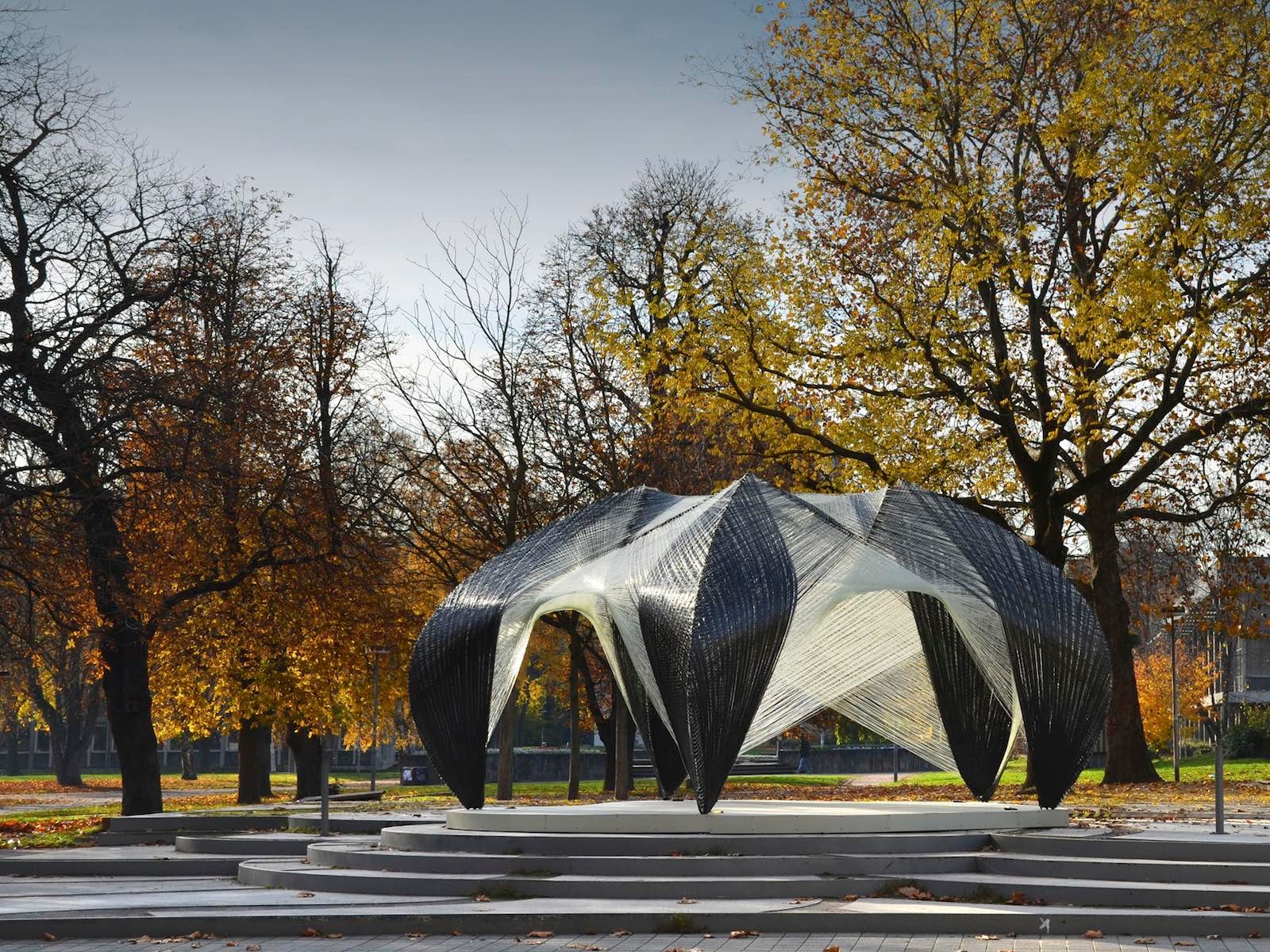Architecture is intimately tied to construction. It is through materials and their assembly that spaces and experiences are realized. Construction has always been a part of architectural education, but its significance within academia varies. While institutions focus their curricula differently, each school works to build an understanding of assembly within the design process. But how has this pedagogy evolved over time, and how can academia challenge the accepted models of building construction?
The first collection in a series focusing on university projects and research-driven design, the following pavilions from the University of Stuttgart’s Institute for Computational Design reveal the power of collaboration and computation. Exploring material limits and biological morphology, the designs are made using computer-aided manufacturing processes that are largely parametric and algorithmic in nature. Looking to develop a richer understanding of computational design and robotic fabrication, the institute continues to explore new construction possibilities through these stunning pavilion projects.


ICD/ITKE Research Pavilion 2010 by Institute for Computational Design (ICD) University of Stuttgart, Stuttgart, Germany
The 2010 Pavilion explored material-oriented computational design and construction through a form that’s directly driven and informed by physical behavior and material characteristics. Designed around the elastic bending behavior of birch plywood strips, the pavilion was made using only 6.5-millimeter-thin plywood sheets.

© Benjamin Busch

ICD/ITKE Research Pavilion 2011by Institute for Computational Design (ICD) University of Stuttgart, Stuttgart, Germany
Building off the previous pavilion, the design in 2011 explored the biological principles of a sea urchin’s plate skeleton morphology and how it could be implemented within architecture. Created as a modular system which allows a high degree of adaptability, the design analyzed the morphology and structure of sand dollars.


ICD/ITKE Research Pavilion 2012by Institute for Computational Design (ICD) University of Stuttgart, Stuttgart, Germany
In 2012 the Institute made a pavilion entirely robotically fabricated from carbon and glass fiber composites. Examining biomimetic design strategies, the pavilion explored arthropods’ exoskeletons and how they could be re-conceptualized through construction.


ICD/ITKE Research Pavilion 2013–14 by Institute for Computational Design (ICD) University of Stuttgart, Stuttgart, Germany
The 2013–14 Pavilion focused on natural fiber composite shells and fiber reinforced polymer structures. The pavilion aimed to create a winding technique for modular structures with minimal formwork. Looking at lightweight structures with the University of Tübingen, the design featured 36 individual elements abstracted from the beetle elytra.

© Institute for Computational Design (ICD) University of Stuttgart

© Institute for Computational Design (ICD) University of Stuttgart
ICD/ITKE Research Pavilion 2014–15 by Institute for Computational Design (ICD) University of Stuttgart, Stuttgart, Germany
Inspired by the underwater nest construction of diving bell water spiders, the 2014–15 pavilion was a lightweight fiber composite shell stiffened by carbon fiber. Initially a flexible pneumatic formwork, the design evolved using a robotic fabrication process with a cyber-physical sensor system.

© Institute for Computational Design (ICD) University of Stuttgart

© Institute for Computational Design (ICD) University of Stuttgart
ICD/ITKE Research Pavilion 2015–16by Institute for Computational Design (ICD) University of Stuttgart, Stuttgart, Germany
This year’s pavilion in Stuttgart demonstrated textile fabrication techniques for segmented timber shells. The first structure of its kind to employ industrial sewing of wood elements at the scale of architecture, the pavilion was inspired once more by the morphology of sand dollars and sea urchins.









